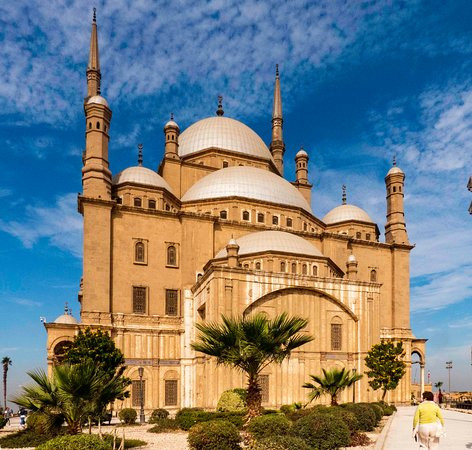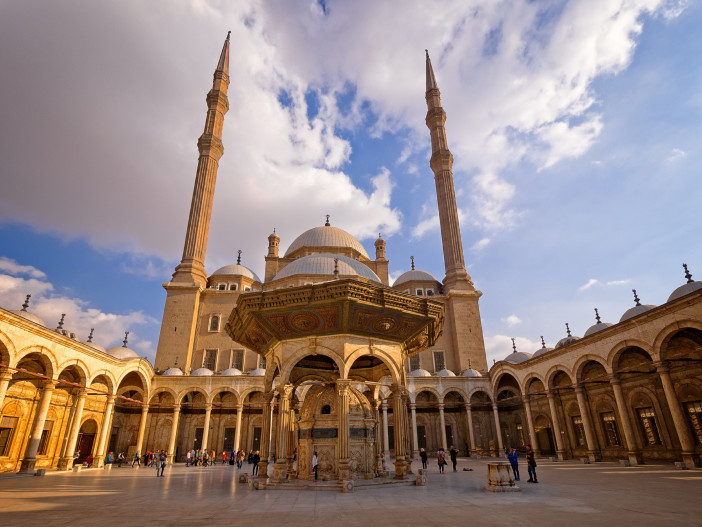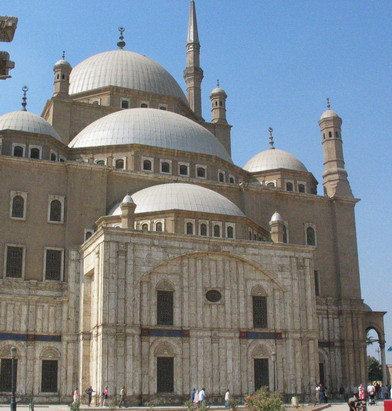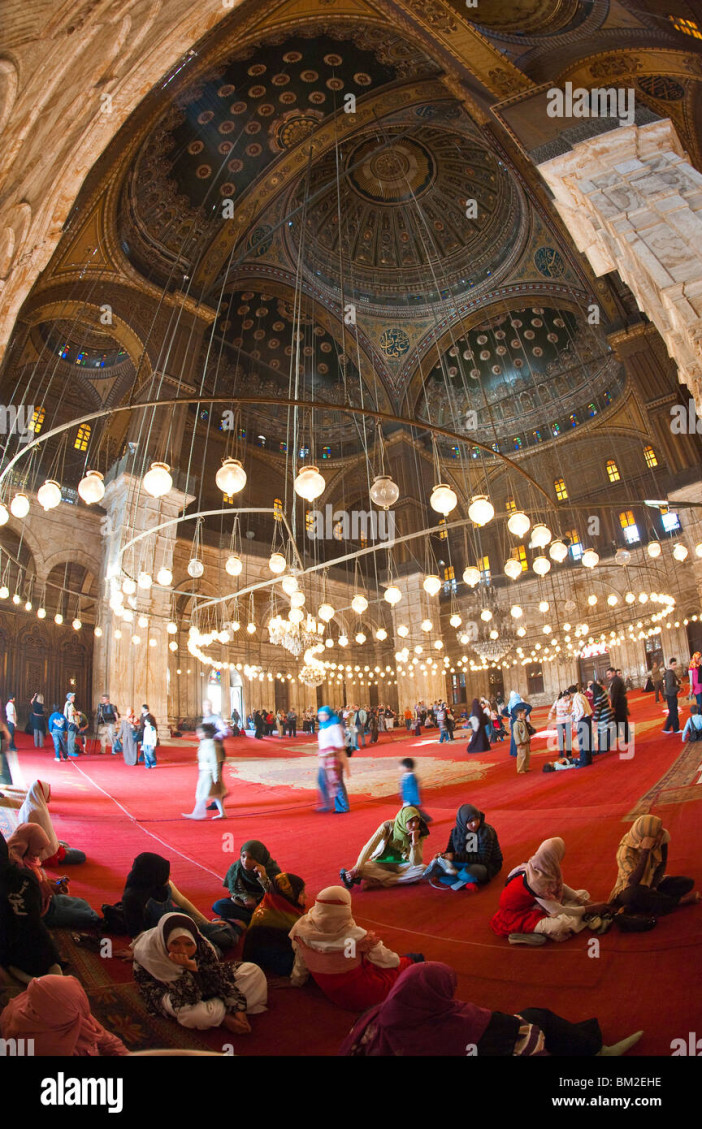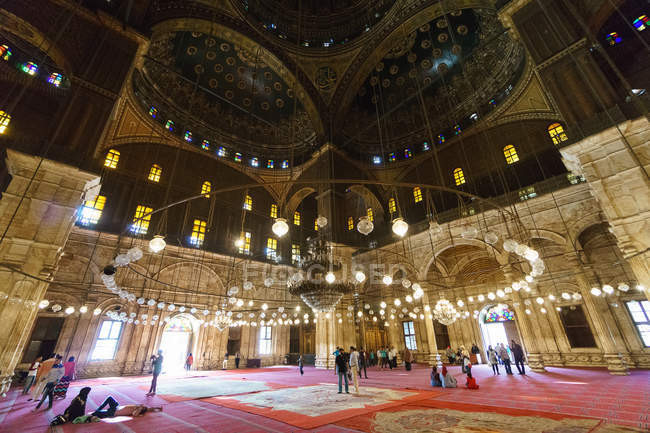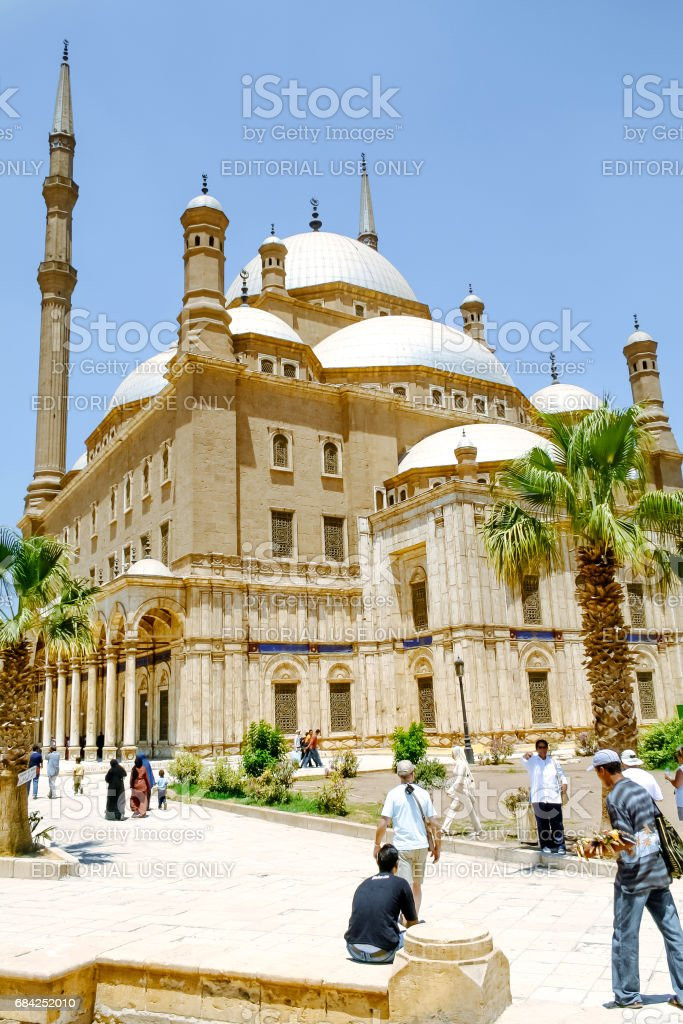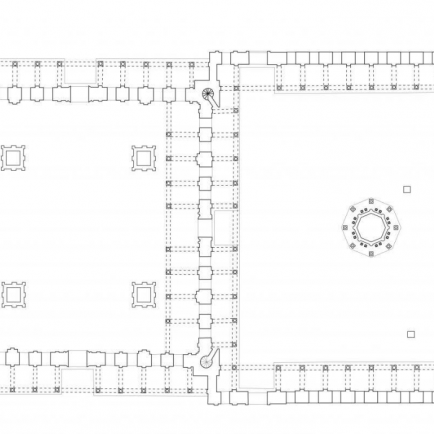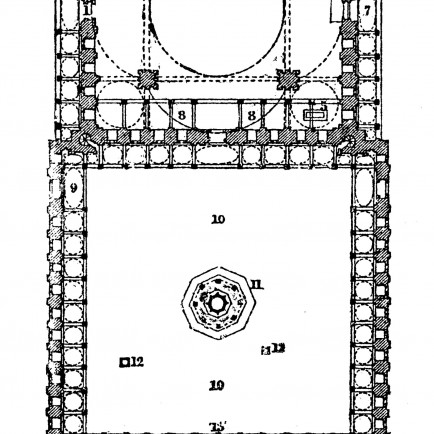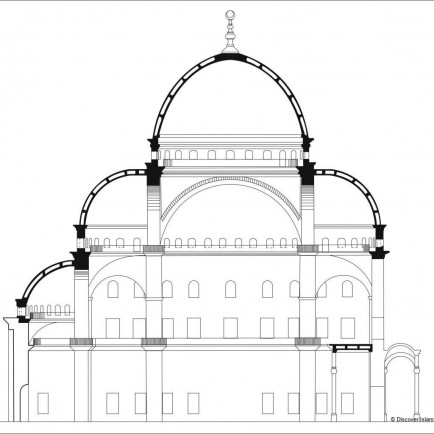Mosque of Muhammad Ali Pasha
History
The foundation stone of this imposing sanctuary was laid in 1830 during the reign of viceroy Muhammad Ali, considered the father of modern Egypt. Its location on a site dominating the whole city seems to have been motivated by political considerations and is sometimes seen as a symbol of the desire to free what was then a distant province of the Ottoman Empire.
Urban and Architectural
Architecturally, the mosque is largely inspired by Ottoman cannons. It reproduces the plan of the great imperial mosques like the Blue Mosque, from which it is largely inspired. Thus, the Muhammad Ali mosque borrows from it the square courtyard - or sahn - open to the sky and bordered by arcades and the cascade of domes and half-domes. The prayer room is a quadrangular unit articulated around the central dome, reaching a height of 52 metres and a diameter of 21 metres. It is supported by a series of four half-cupolas, which are supplemented by four smaller cupolas at each of the corners of the sanctuary. All are decorated inside with paintings and gilding, while the walls of the mosque incorporate high alabaster panels rising to more than 11 metres. That is why the sanctuary is sometimes called the "alabaster mosque".
Description
The mosque contains the marble tomb of Muhammad Ali, located in the south-eastern part of the shrine. It is encircled by a bronze door made in the late 19th century. The bulging mirhab is surmounted by a half-dome. The mosque also has the distinction of having two minbars, one in gilded cedar wood and the other in alabaster, made at the request of King Farouk.
References
https://fr.wikipedia.org/wiki/Mosqu%C3%A9e_Mohammed_Ali
https://egymonuments.gov.eg/monuments/muhammad-ali-mosque/
Details
Location
Al Abageyah, El Khalifa, Cairo Governorate, Égypte
Worshippers
2000
Owners
Muhammad Ali Pasha
Year of Build
1848
Area
5700
Drawings
Map
History
The foundation stone of this imposing sanctuary was laid in 1830 during the reign of viceroy Muhammad Ali, considered the father of modern Egypt. Its location on a site dominating the whole city seems to have been motivated by political considerations and is sometimes seen as a symbol of the desire to free what was then a distant province of the Ottoman Empire.
Urban and Architectural
Architecturally, the mosque is largely inspired by Ottoman cannons. It reproduces the plan of the great imperial mosques like the Blue Mosque, from which it is largely inspired. Thus, the Muhammad Ali mosque borrows from it the square courtyard - or sahn - open to the sky and bordered by arcades and the cascade of domes and half-domes. The prayer room is a quadrangular unit articulated around the central dome, reaching a height of 52 metres and a diameter of 21 metres. It is supported by a series of four half-cupolas, which are supplemented by four smaller cupolas at each of the corners of the sanctuary. All are decorated inside with paintings and gilding, while the walls of the mosque incorporate high alabaster panels rising to more than 11 metres. That is why the sanctuary is sometimes called the "alabaster mosque".
Description
The mosque contains the marble tomb of Muhammad Ali, located in the south-eastern part of the shrine. It is encircled by a bronze door made in the late 19th century. The bulging mirhab is surmounted by a half-dome. The mosque also has the distinction of having two minbars, one in gilded cedar wood and the other in alabaster, made at the request of King Farouk.


